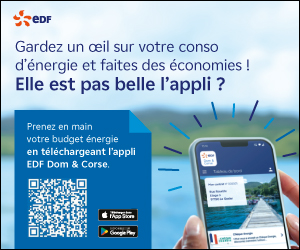2012-2017: what can we say about our economy?
In March 2012, the majority arrived with one leader, Alain Richardson, but implemented their initiatives with a different one, Aline Hanson. Furthermore, they were elected with a common program, the RRR (a French acronym for “Gathering, Responsibility, Success), which included an economic component.
♦ The 2012 Program
"To relaunch and build the economy in order to create wealth and jobs", this was the RRR’s goal. Nine main actions had been prioritized:
- Joint development of the territory
- Encourage high-value industries (processing, exports)
- Revitalize the waterfront and restore the Grand Case pier
- Create a fund for development and social entrepreneurship while generating solutions that combine social utility and economic efficiency
- Strengthen the microcredit programs in order to promote local economic growth
- Create a free zone for interregional trade, distribution, imports-exports and e-commerce
- Readjust taxes
- Create an overall center for tourism and real estate
- Establish a renovation lease agreement in order to put new private homes on the market and also revitalize the local construction and civil engineering industry
♦ The achievements
Out of these nine actions listed above, two were partly achieved:
- the renovation of the Grand Case pier. Indeed, the port validated the administrative acceptance of the work on October 4. Nevertheless, it should be noted that this project was funded and planned by the port (which is of course an agency of the Collectivité) and not directly by the Collectivité.
As for the waterfront’s revitalization, the Collectivité has chosen the concession procedure in order to achieve this ambitious project. The deadline for filing applications is October 26.
- The RRR also aimed to “readjust taxes”. In this area, few changes have been made, except for the two-point increase of the turnover tax (TGCA) which brings it to 4 %; a decision which was made when the agreement was signed between the Collectivité and the State-French Development Agency (AFD) on December 12, 2012. The AFD granted a loan but the Collectivité had to prove that it was able to increase its revenues.
- In this same perspective, the Collectivité also increased the passenger tax (initially set at 10 euros) for passengers departing from the Grand Case airport. Its yield was supposed to be used to repay the loan which was to be granted in order to buy the land needed for the extension of the runway.
- Also in order to increase its revenues, the Collectivité introduced the famous 100€ contribution; a sum that taxpayers must pay in order to obtain their tax notification. This "contribution" was supposed to help the Collectivité pay what it owed to the State in terms of debt.
♦ The other measures
Among the main measures that the Collectivité carried out during these five years, we can mention: the renovation of the carbets on Orient Bay (even though this project was boosted by Hurricane Gonzalo in October 2014), the establishment of the blue area in downtown Marigot, the publication of the investors’ guide "Doing Business in Saint-Martin".
Beyond the esthetic aspect which each person can appreciate according to their tastes, the Orient Bay carbets bring a certain added value to the site, which has been acknowledged by the tourists. Yet, public opinion qualifies this project as a fiasco. The delivery which was postponed for several months, the quirks in the amenities, and especially the increase in rent for the operators as well as their forced revision destroyed any chances for the Collectivité to be seen favorably.
It was the same with the establishment of the blue area in downtown Marigot. After years of complaints from various people about parking in the downtown area, the Collectivité decided to regulate parking and limit it to 90 minutes in June 2016. At the same time, it set up a free shuttle bus between the Galisbay parking lot and the city. But this shuttle bus is not used. And especially two months later, the water and sanitation agency (an agency of the Collectivité) launched a huge project: the replacement of the water pipes in the main shopping streets. We will remember only one thing from all of this: "The Collectivité is doing its best to kill business".
Finally, there’s also the reorganization and renovation of the tourist market in Marigot; the measures taken (renovation of the doors, carpentry, painting, reallocation of the market vendor spaces, etc.) which was mentioned in the economic department’s balance sheet in the service reports in 2013 and 2014.
♦ Employment: almost as many people registered in category A at Pôle Emploi, the French employment agency
To assess the labor market, we used the figures from Pôle Emploi although we know that they do not reflect the full reality. In September 2016, 4,326 people were registered in category A at Pôle Emploi, which is as many as in 2012 by more or less four people. One should bear in mind, however, that "the figures starting in January 2013 are not strictly comparable to previous months due to a change in the rules for administrative removals from the list and the introduction of age at the end of the month".
Although there are less women looking for jobs than in 2012 (-4.45%), there are more men ( + 7.3%).
If we consider all the categories (from A to E) that are in the Pôle Emploi classification, 399 more people than four years ago have been registered, which came to a total of 5,139 people at the end of September 2016 (+8.4%).
♦ Business aid
The forms of business aid have always been limited. The average budget allocated annually is 240,000 euros including a percentage which is intended for Initiative Saint-Martin Active and another percentage for the store owners' association.










